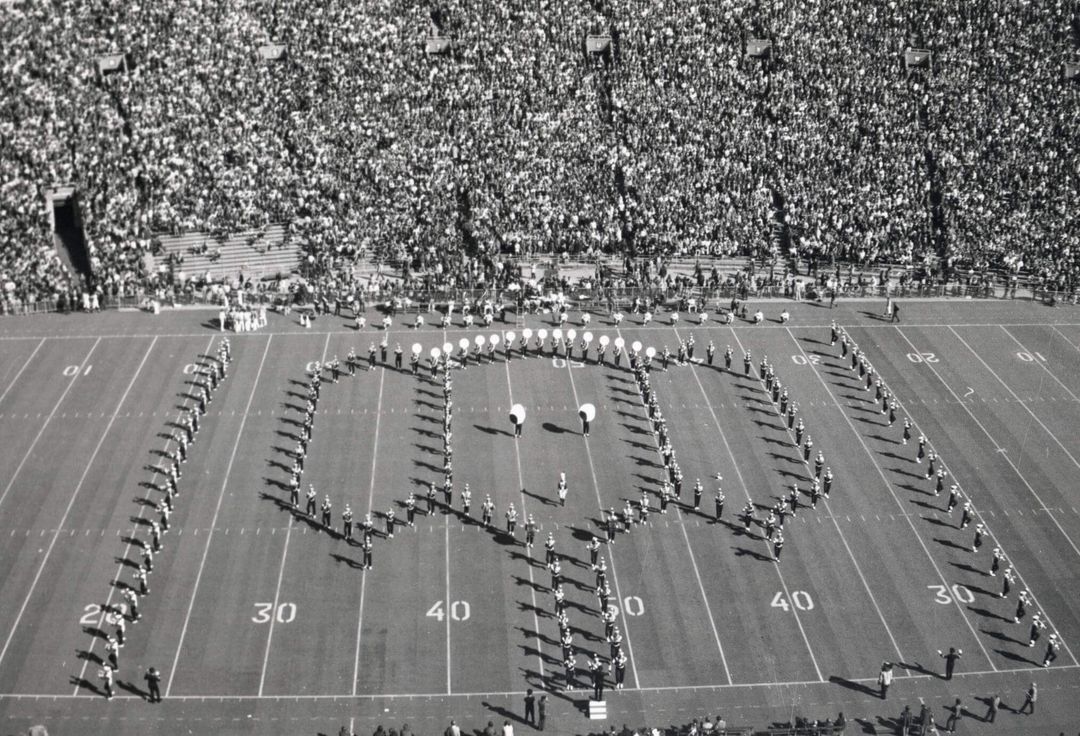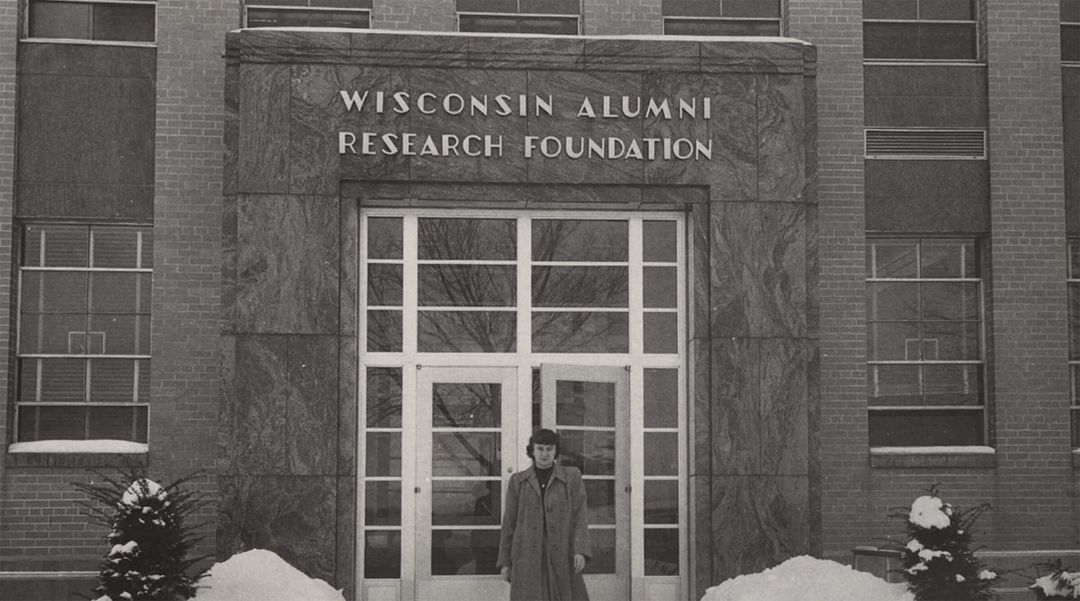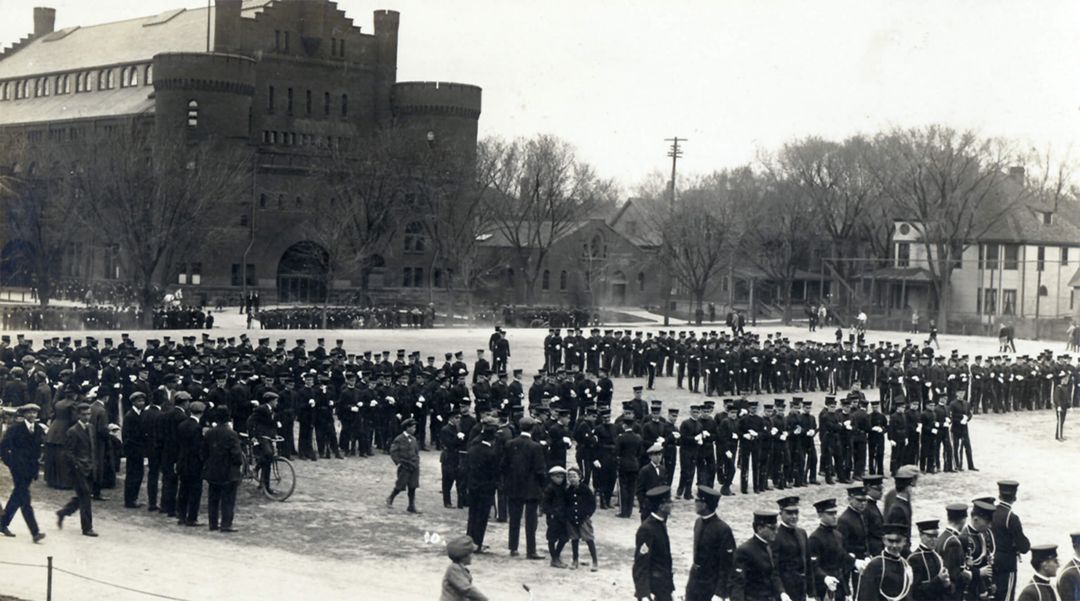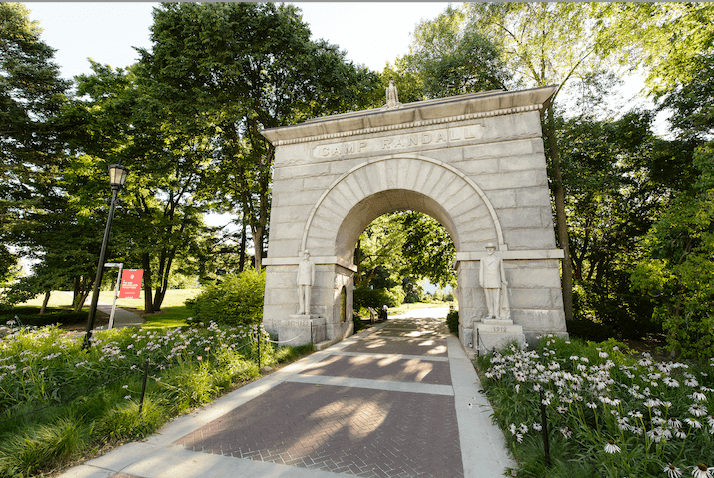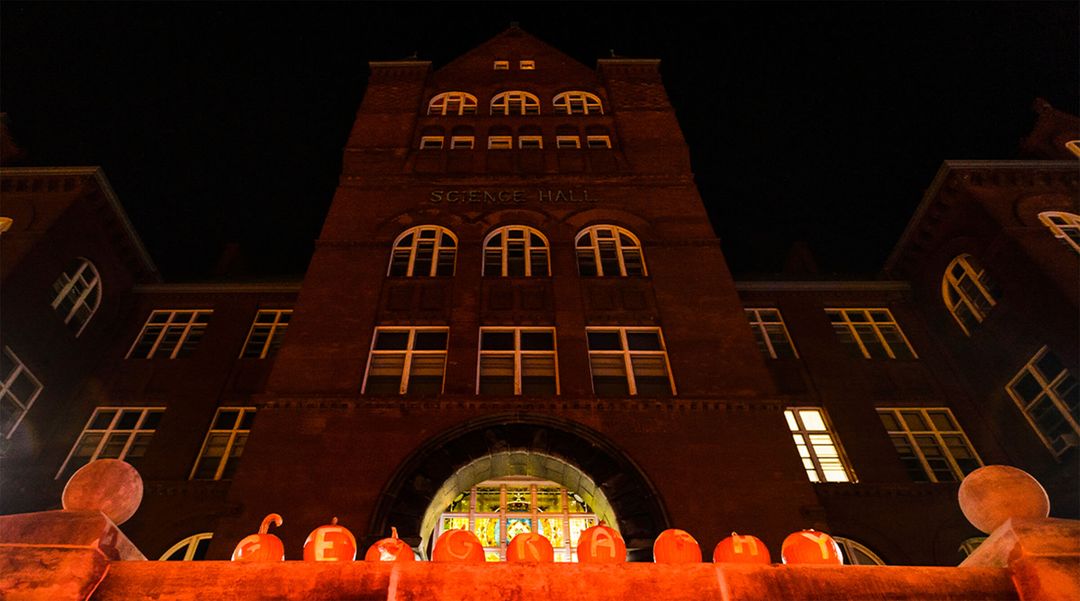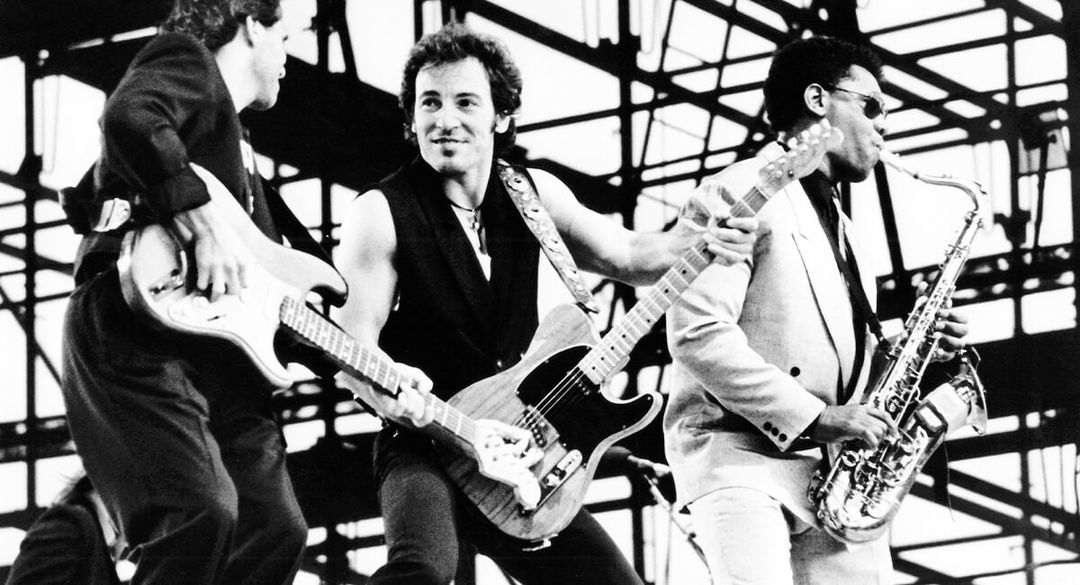The brand-new dormitory at the University of Wisconsin was both charming and bold. Limestone arches and balusters echoed the Italian Renaissance style, and enormous, arched windows and French doors reflected the artisanal stone courtyard where the new residents moved their belongings into the newly furnished rooms. It was the fall of 1913, and Barnard Hall had opened its doors as the second women’s dorm on campus.
A century later, Barnard Hall is the oldest functioning residence hall on campus, and UW students still call it home.
Ashley Trewartha x’14 is one of these students, having lived in Barnard since she was a first-year student. Like many others, Trewartha was drawn to the rich, historical icon that Barnard represents. “Barnard is a snapshot of history that adds to the layers of the UW’s legacy,” said Trewartha. “It is a landmark of what it was like a hundred years ago on this campus.”
Barnard Hall was named after Henry Barnard, chancellor of the University of Wisconsin from 1859 to 1861, his leadership cut short due to periods of illness.
Ironically, Henry Barnard did not support student housing on campus, believing that “the drain on the income of the institution, for this purpose, should be stopped at once, thoroughly and forever.” Instead, he encouraged students to live in private homes off campus. But shortly after his death in 1900, the board of regents memorialized Henry Barnard with the very thing he discouraged: a brand-new dormitory for women.
Despite its paradoxical beginnings, Barnard Hall became the home to hundreds of young women attending the growing university. Valeria Davis Humphrey ’81 remembers living in the “Barnyard” her freshman and sophomore years. She describes Barnard life during that time as being playful and exciting inside a very social and diverse community. “We got to meet such a diverse array of people,” said Davis. “Because there were upperclassmen who liked living in Barnard, we got to meet older students.”
That was how Davis met her best friend, Susan Palmer ’80. Palmer lived in Barnard Hall from 1976 through 1979, and was a junior when she and Davis met.
Their memories include show-tune sing-alongs at the grand piano in the first-floor parlor, watching soap operas in the TV lounge, and baking cookies for their night watchman, Charlie, who would say goodnight to every resident by name. “Charlie was like having a dorm dad,” said Davis with a smile. “I don’t think he ever took a night off. He was there every night to do rounds,” said Palmer.
While Barnard was then an all-women’s hall, that did not mean it was quiet or docile. Davis and Palmer remember numerous pranks that they and their friends played on their fellow residents, one time even disassembling a girl’s bedroom and reassembling it outside in the courtyard.
“On winter nights, especially when it was snowing, we would run around and knock on all the doors and all go for a donut run,” said Palmer. “It would be midnight, and we would walk with our pajamas and coats over to Greenbush Bakery for the first hot donuts.”
“I have the best memories from living in Barnard, and we have lifelong friendships,” said Davis. “We used to have this saying, ‘Leave no Barnardian behind,’ and we always looked out for our hall mates.”
Davis and Palmer’s friendship has continued on since their time at Barnard. Having families in Madison, they are both godmothers to each other’s children, some of whom have become UW-Madison students themselves.
In 2001, Barnard Hall joined Chadbourne Hall to become part of the Chadbourne Residential College (CRC), a learning community developed by Professor William Cronon ’76 in 1997. The purpose of the CRC was to integrate the resources of a large research university with the personal attention of instructors and leaders within the community. Besides joining the CRC, Barnard opened its doors to male residents, making it co-ed by floor.
Housemothers had long since been replaced by floor house fellows — upperclassmen and upperclasswomen who help facilitate residential living experiences. New floors, freshly painted walls and a brand-new, first-floor kitchen have replaced some of the old amenities, but the vintage charm of Barnard Hall remains in the wood-carved buffet room in the basement, with its tall, slender windows and wide staircases. The nature of Barnard Hall has shifted significantly in the 21st century, but its character has remained.
Trewartha said she often feels like Barnard Hall is like a ghost on campus, its Italian Renaissance architecture hidden on either side by Chadbourne and Lathrop Halls. “UW has such a rich history, and sometimes places like Barnard are overlooked because we just walk by it every day,” she said. “But it is a living piece of history that has 100 years of stories.”
Davis is also excited to celebrate Barnard Hall’s centennial. “I am so glad that the UW has preserved Barnard,” she said. “Like Bascom Hall, North Hall and South Hall, it has so much history and memories attached to it. It makes me so proud to have been a Barnardian.”










